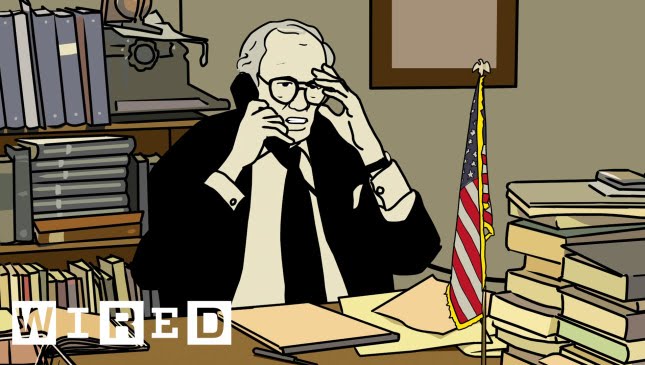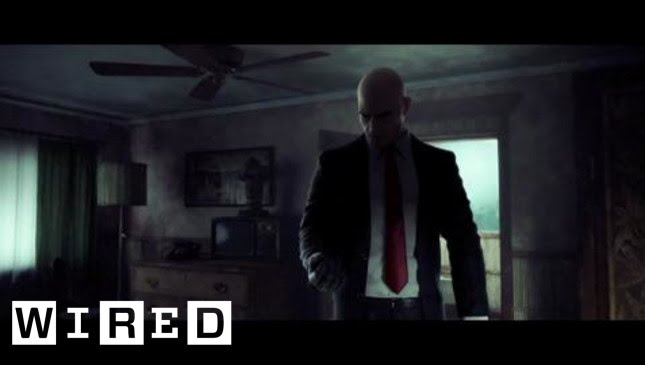Physics concepts in Superhero Movies and TV Shows
Summary
The article discusses various physics concepts showcased in superhero movies and TV shows, such as the superhero landing, kinetic energy, recoil, contact area, tensile strength, and terminal velocity. The author, a physics professor, explains these concepts in simple terms and provides examples from popular superhero franchises like Deadpool, Black Panther, Wonder Woman, Justice League, Spider-Man Homecoming, and Captain America The Winter Soldier. The author concludes that while some of these concepts are plausible, others are not realistic and are purely for entertainment purposes.
Table of Contents
- The Importance of Thinking About the Consequences of Actions
- How Does Superman’s X-Ray Vision Work?
- The Benefits of Winding Up Thor’s Hammer Before Striking
- Superhero Landing: An Overused Trope?
- Recoil and Contact Area in Deadpool’s Scene
- Tensile Strength and Terminal Velocity in Black Panther
- Realism of the Scene with A-Train Running into a Girl
- The Wile E. Coyote Effect in Dash’s Scene
- The Stabilization of Iron Man’s Flight
- The Feasibility of Groot’s Cage in Guardians of the Galaxy
- The Angle at Which Superheroes Punch in The Defender
Introduction
Superhero movies and TV shows have gained huge popularity in recent years. With their exciting fight scenes and death-defying stunts, they undoubtedly provide a lot of entertainment value. However, they also frequently showcase several physics concepts, although they may not always be 100% accurate. In this article, we’ll discuss various physics concepts portrayed in popular superhero franchises and examine their plausibility.
Q&A
The Importance of Thinking About the Consequences of Actions
It is common to see superheroes perform seemingly impossible feats, but have you ever wondered about the physics behind these stunts? As it turns out, many of these stunts have some basis in simple physics concepts. However, it’s essential to consider the consequences of such actions, even for superpowered individuals. For instance, in the scene where Captain America skydives and enters the water feet first, he is trying to decrease the stopping force and increase the distance of where he stops. This is a plausible concept, as entering the water in this way reduces the deceleration experienced by the body.
How Does Superman’s X-Ray Vision Work?
Superman’s ability to see through objects with his X-ray vision is another popular trope used in superhero movies. This ability is often portrayed as a beam of light that penetrates objects and allows him to see through walls. However, how does this ability work? In reality, X-rays are high-energy electromagnetic radiation that can penetrate solid objects. Still, the power required to generate X-rays is tremendous and unfeasible for a human body to produce. Hence, Superman’s X-ray vision might not be the most realistic portrayal of this ability.
The Benefits of Winding Up Thor’s Hammer Before Striking
In Avengers Endgame, there is a scene where Captain America uses Thor’s hammer to attack Thanos. What is interesting about this scene is that he first winds up the hammer before striking. While this may seem like a stylistic choice, it does have some basis in physics. When you wind up a swinging motion, you create more torque, which is a twisting force. This torque can be used to increase the force of the swing.
Superhero Landing: An Overused Trope?
One of the most common clichés in superhero movies is the superhero landing. A hero lands with incredible force, bending their knees, and sending shockwaves around them. This landing is used to show the hero’s power and can look impressive. However, it is also one of the most overused tropes in these movies. The reality is that bending your knee after a fall does not lessen the impact of the fall. Instead, it channels the force of the fall into the knees and ankles, which can cause fractures and strains.
Recoil and Contact Area in Deadpool’s Scene
In Deadpool, there’s a scene where our hero shoots himself through the mouth. As expected, his body is thrown backward with significant force. This is an example of recoil, the concept that when one object exerts force on another, they experience equal and opposite reactions. The other concept at play in this scene is contact area. Deadpool uses a gun with a small surface area, which means the force of the gun’s recoil is concentrated in that small area. A gun with a larger surface area would distribute the force over a greater area, reducing its impact.
Tensile Strength and Terminal Velocity in Black Panther
In Black Panther, T’Challa jumps off a waterfall and lands safely in the water below. This scene showcases two physics concepts: tensile strength and terminal velocity. Tensile strength is the strength of a material under tension, and it determines how much force it can withstand before breaking. In the scene, the vines T’Challa lands on have enough tensile strength to withstand his weight. Terminal velocity, on the other hand, refers to the maximum speed at which an object falls through the air. At terminal velocity, the force of the air resistance acting on the object equals the force of gravity, so the object stops accelerating and falls at a constant speed.
Realism of the Scene with A-Train Running into a Girl
In The Boys, there is a scene where A-Train runs into a girl at high speed, and it’s suggested that the collision could be fatal. But is this realistic? The severity of a collision depends on the speed, contact area, and how they hit. A-Train’s speed in the scene is around 360 mph, which is way beyond human capability. If he hits headfirst or at the center of the body, he would likely poke through her, disabling the integrity of her body.
The Wile E. Coyote Effect in Dash’s Scene
In The Incredibles, there’s a scene where Dash runs on water, and the moment he stops and hovers, he falls into the water with a splash. This is an example of the Wile E. Coyote effect, named after the character from the Looney Tunes cartoons that would momentarily hover in the air after running off a cliff before falling. In reality, the force of the water would not allow Dash to hover for any length of time, making this scene implausible.
The Stabilization of Iron Man’s Flight
Iron Man is one of the most popular superheroes, and his flight scenes are always a hit with the audience. In Iron Man 3, he uses higher thrusters and hands further apart from his body to stabilize while flying. This is a practical concept, as placing your arms and legs further away from your body increases your moment of inertia, which makes it harder to rotate. However, the idea that Iron Man can fly in armor is not realistic, as the armor’s weight would make it impossible for him to stay in the air for long periods.
The Feasibility of Groot’s Cage in Guardians of the Galaxy
In Guardians of the Galaxy, Groot creates a cage to protect the heroes from debris using his branches. Theoretically, this concept could work if the material used is both flexible and strong. A crumple zone made of unbreakable objects would also protect the heroes from the force of the impact. However, other factors would come into play, such as the speed and size of the debris.
The Angle at Which Superheroes Punch in The Defender
In The Defender, there’s a scene where Daredevil punches his opponent at a specific angle to avoid breaking his own hand. This concept has some basis in physics, as the force of the punch is also applied to the puncher’s hand. Punching at a particular angle that distributes the force across the arm reduces the risk of injury to the hand. However, punching at a 45-degree angle, as seen in the show, is not always the most effective angle for every punch.
Conclusion
In conclusion, physics concepts are frequently portrayed in superhero movies and TV shows, offering a glimpse into how the world works. While some concepts are plausible, others are not realistic and exist only for the sake of entertainment. However, it is crucial to consider the impact of these stunts and to appreciate the entertainment value they provide. Superhero franchises certainly know how to captivate us with their imaginative displays of power, and we can’t wait to see what physics-inspired concepts they’ll bring to the big screen next.







